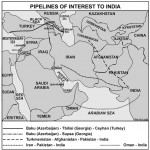The 521-acre economic and trade zone is an important part of what China calls the “going out” policy and its Africa strategy. The objective is to use Mauritius as a platform for servicing its construction and business projects in Southern Africa. The corporate headquarters of Chinese companies operating in Southern Africa are expected to be located in the new commercial city which China will construct outside Port Louis under this project. The zone with a modern Chinese-styled city is being built by a consortium consisting of the Shanxi Tianli Enterprise Co., Ltd., the state-controlled Shanxi Coking Coal Group Co. Ltd and the Taiyuan Iron & Steel Group Co. Ltd. The idea seems to be to convert Mauritius into a Singapore of Southern Africa to serve China’s Africa strategy. Since Mauritius does not have enough skilled workers to meet the requirements of the Chinese-aided projects, it has allowed China to bring its own nationals to work in these projects. As a result, about 50 per cent of Mauritius’ foreign labour force could be Chinese. There could be more Chinese than Indians working in Mauritius.
The corporate city being built by the Chinese will compete with the Ebene Cyber City constructed with Indian assistance. Huawei, the Chinese IT company, reportedly operates from the Cyber City. It provides financial services to Chinese companies in Southern Africa.
Also read: Asian Security Envinronment: India’s options
In an article titled “China makes foray into Mauritius” published on January 25,2010, the “Financial Times” of London wrote: “China’s state-led approach to foreign investment is muscling India aside in its traditional “backyard” by investing $700m in a special economic zone in the Indian Ocean island of Mauritius to service Beijing’s expansion in Africa. Ramakrishna Sithanen, the vice-prime minister of Mauritius and minister of finance, said China was “extremely aggressively” pursuing its objectives in Africa via Mauritius with a wave of strategic investments on the island. He said China’s “different approach”, which forcefully combined business and government interests, was in contrast to India’s more fragmented style that had less backing from the state. So strong was his government’s relationship with Beijing that he said the island had been able to call on the personal intervention of Hu Jintao, China’s president, to sort out problems. China’s participation in Mauritius is a key part of the island’s diversification away from a sugar cane and tourism economy into logistics, information technology and financial services. There are plans to build a logistics and services hub in the economic zone, together with a university and an oceanographic research centre. Mr Sithanen said the Mauritian government had secured China’s consent that the economic zone would not be exclusively for Chinese companies but could be used by others seeking to invest in the region.”
In working out an Indian strategy for the Indian Ocean region, the political, economic and naval aspects have to receive equal attention. So too the aspect of the Indian and US Navies co-operating with each other to maintain their present primacy in this region.
Having seen the gradual erosion of the Indian political influence in Sri Lanka, we are now seeing a similar erosion in Mauritius It used to be under Indian cultural and economic influence. It continues to be under the Indian cultural influence, but the economic influence is more and more Chinese. As the Chinese economic influence grows, so will its political influence. In protecting one’s core interests, it is the economic and political influence that matters and not the cultural influence.
The gradual decline in our political and economic influence in the Indian Ocean region—whether we admit it or not— has been accompanied by a steady increase in the Chinese onshore presence in the countries of this region— mainly for helping these countries in developing their infrastructure— an airport and an economic and trade city in Mauritius, a commercial port and an international airport in Hambantota in Sri Lanka, expansion and modernization of the Colombo port, road and rail repairs and construction in others parts of Sri Lanka, construction of a new port at Kyaukpyu in Myanmar, gas and oil pipelines connecting Kyaukpyu and Yunnan so that gas and oil produced locally and coming by tankers from West Asia and Africa could be moved to Yunnan without having to pass the Malacca Strait and construction of a rapid rail system connecting Rangoon (Yangon) with Yunnan. Talks are on with Bangladesh for Chinese assistance in the modernization of the Chittagong port and for connecting the rail systems of Bangladesh and Myanmar. China is the largest foreign investor in Mynmar today, with the total value of actual and promised investments already touching US $ three billion.




